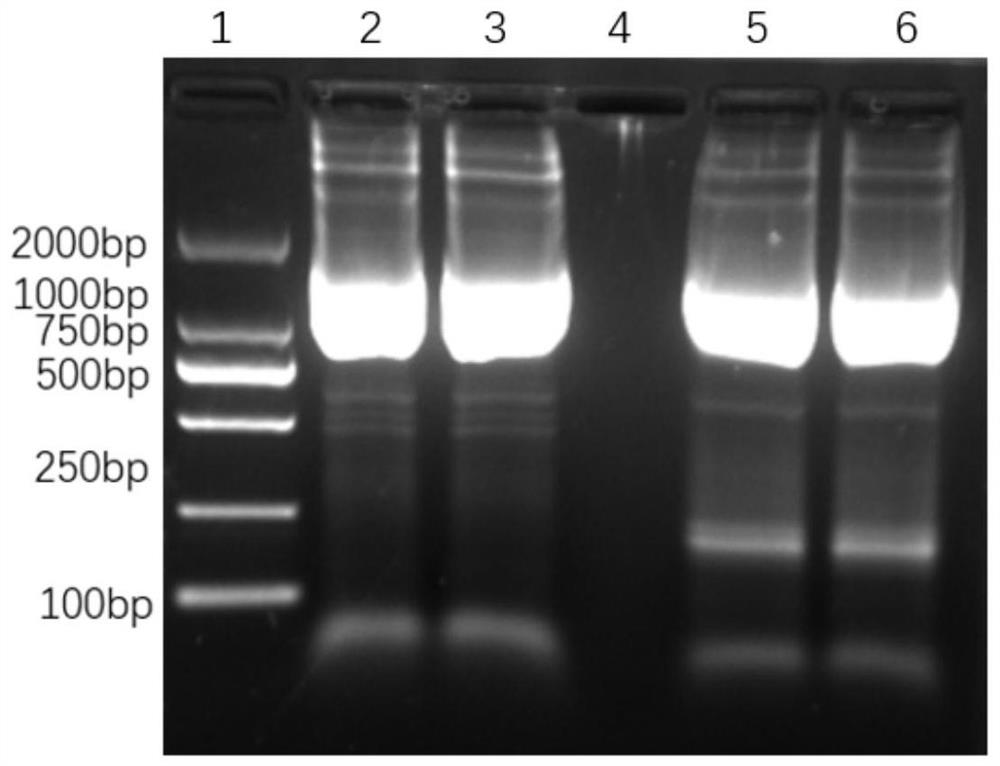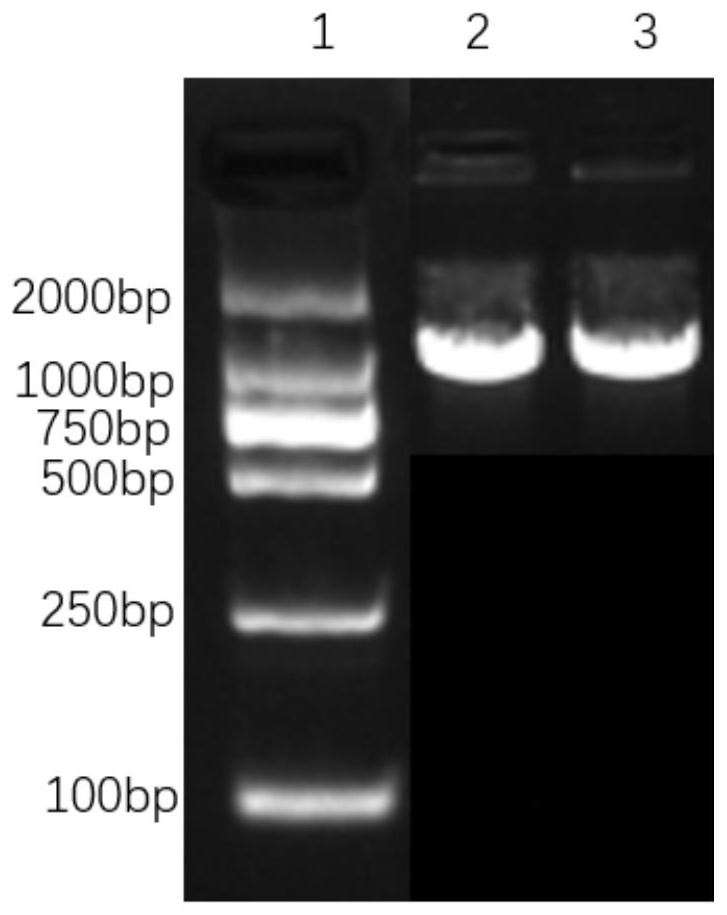Chimeric antigen receptor capable of simultaneously targeting CD19 and CD20 and application of chimeric antigen receptor
A technology of chimeric antigen receptor and CD20, which is applied in the field of biomedicine, can solve the problems of general treatment effect, recurrence or ineffectiveness of lymphoma, and achieve the effect of preventing off-target effects
- Summary
- Abstract
- Description
- Claims
- Application Information
AI Technical Summary
Problems solved by technology
Method used
Image
Examples
Embodiment 1
[0088] Example 1: Linking CD19 scFv and CD20 scFv antigen recognition domains
[0089] 1. Design primers to amplify CD19scFv domain and CD20scFv domain by PCR respectively. Primers are as follows:
[0090] 19F1:CTAGCTAGCGATATTGTGCTGACCCAG19R1:GCTCAATGTCCTTAGCAGCGGCTTCCTTAGCAGCGGCTTCCTTA GCAGCGGCTTCCTTAGCAGCGGCTTCCTTAGCAGCGGCTTCGCTGCTCACTGTCAGGGTGGT20F1:AGTGAGCAGCGAAGCCGCTGCTAAGGAA GCCGCTGCTAAGGAA GCCGCTGCTAAGGAAGCCGCTGCTAAGGAAGCCGCTGCTAAGGACATTGA GCTCACCCAGTC20R1:CCGGAATTCTGAGGAGACGGTGACCGTG19F2:ACCAAGCTGGAAATCAAAGGTGGTGGTGGTTCTGGCGGCGGCG GCTCCGGTGGTGGTGGTTCTGAGGTGAAGCTG19R2:CCGGAATTCGCTGCTCACTGTCAGGGTG20F2:CTAGCTAGCGACATCGAGCTCACTCAG20R2:CAGCTTCACCTCAGAACCACCACCACCGGAGCCGCCGCCGCCAGAACCACCACCACCTTTGATTTCCAGCTTGGT
[0091] 2. Use 19F1 and 19R1, 19F2 and 19R2 as two pairs of primers to amplify CD19scFv to obtain two fragments 19-1 and 19-2; use 20F1 and 20R1, 20F2 and 20R2 as two pairs of primers to amplify CD20scFv to obtain 20 -1 and 20-2 two fragments.
[0092] Prepare the ...
Embodiment 2
[0120] Example 2: Construction of Chimeric Antigen Receptor Vector
[0121] 1. Use Nhe I, EcoR I endonuclease to digest the plasmid containing CD8α-4-1BB-CD3ζ fragment (source CD19CAR), obtain CD8α-4-1BB-CD3ζ fragment, its amino acid sequence is as shown in SEQ ID NO.12 Show. The plasmid containing the CD8α-4-1BB-CD3ζ fragment can be prepared by any suitable method in the prior art.
[0122] 2. Ligate the tan1920 scFv, tan2019 scFv, loop1920 scFv, and loop2019 scFv fragments obtained in Example 1 with the target vector to obtain the corresponding CAR expression vector. The constructed CAR expression vector was identified by digestion with XbaI and NotI. The result is as image 3 As shown, the enzyme digestion results showed that the positive clone contained the target band and was correctly identified by sequencing. The schematic diagram of the carrier is as Figure 4 Show.
Embodiment 3
[0123] Example 3: Preparation of chimeric antigen receptor CD22 scFv-CD8α-4-1BB-CD3ζ lentivirus modified T cells
[0124] 1. Use EndoFree Plasmid Maxi Plasmid Extraction Kit (QIAGEN Company) to extract tan1920 CAR, tan2019 CAR, loop1920 CAR, loop2019 CAR expression plasmids and packaging plasmids pMDLg / pRRE, pRSV-Rev, pMD2G four plasmids with 3:1:1 :1 ratio was transfected with PEI transfection reagent (polyscience company) (see the manual of PEI transfection reagent for specific methods). Replace the fresh culture medium 12 hours after transfection, collect the virus supernatant 24 hours and 48 hours later, centrifuge at 4°C, 3000rpm for 15 minutes, filter through a 0.45μm filter, and use 50000g, 4°C, 1.5 hours after ultracentrifugation Concentrate 10 times, then transfer to -80°C for storage.
[0125] 2. Preparation of T cells: Take 10 ml of fresh healthy human peripheral blood, and use RosetteSep T cell enrichment Cocktail (Stemcell) and Ficoll-Paque PLUS (GE Healthcare) t...
PUM
 Login to View More
Login to View More Abstract
Description
Claims
Application Information
 Login to View More
Login to View More - R&D
- Intellectual Property
- Life Sciences
- Materials
- Tech Scout
- Unparalleled Data Quality
- Higher Quality Content
- 60% Fewer Hallucinations
Browse by: Latest US Patents, China's latest patents, Technical Efficacy Thesaurus, Application Domain, Technology Topic, Popular Technical Reports.
© 2025 PatSnap. All rights reserved.Legal|Privacy policy|Modern Slavery Act Transparency Statement|Sitemap|About US| Contact US: help@patsnap.com



